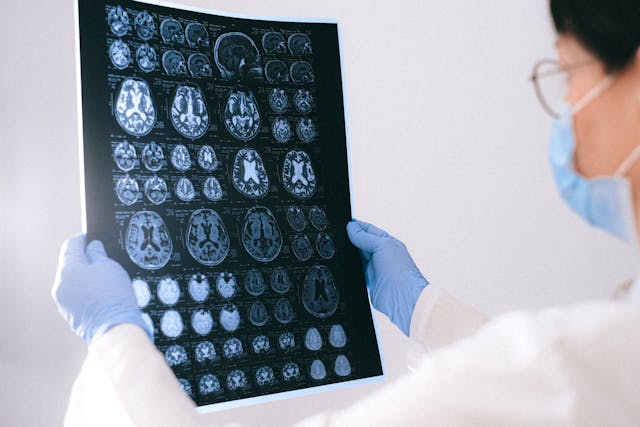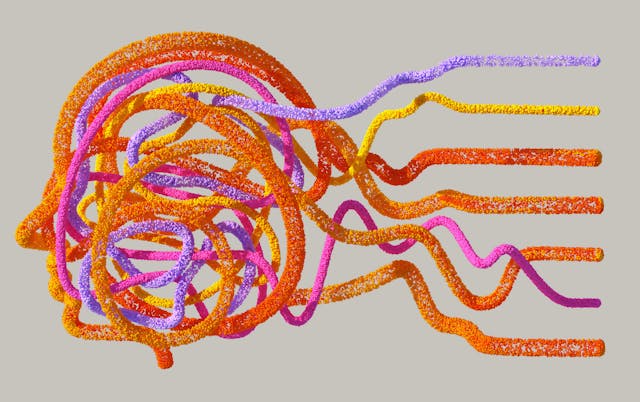The Human Brain: Unlocking the Secrets of Our Most Complex Organ
The human brain, weighing just about 3 pounds and made up of around 86 billion neurons, is the most complex organ in the human body. It is the control center for everything we do, think, and feel. From regulating basic bodily functions like breathing and heartbeat to facilitating complex cognitive tasks like reasoning, memory, and emotion, the brain is responsible for our identity and how we interact with the world around us.
Despite centuries of study, the human brain remains an enigma. While scientists have made enormous strides in understanding its structure and functions, many of its mysteries are still unsolved. In this article, we’ll explore the remarkable features of the brain, its intricate systems, and the cutting-edge research that is helping us unlock its secrets.

Brain Structure: The Basics
The brain is divided into several key regions, each responsible for different functions:
- Cerebrum: The largest part of the brain, responsible for higher functions like reasoning, movement, and sensory perception. It is divided into two hemispheres: the left hemisphere (which controls logic, language, and analytical tasks) and the right hemisphere (which is responsible for creativity, spatial abilities, and intuition).
- Cerebellum: Located at the back of the brain, the cerebellum plays a key role in coordination, balance, and fine motor control. It helps us perform tasks like walking, typing, or playing musical instruments.
- Brainstem: The brainstem connects the brain to the spinal cord and controls basic life-sustaining functions like heart rate, breathing, and digestion. It is made up of the midbrain, pons, and medulla oblongata.
- Limbic System: This system is involved in emotion, memory, and behavior. It includes the amygdala, which processes emotions like fear, and the hippocampus, which is vital for forming new memories.
Neurons and Synapses: The Brain’s Communication Network
The brain’s power lies in its vast network of neurons, specialized cells that transmit information through electrical and chemical signals. These neurons communicate with each other through synapses, which are the tiny gaps between neurons. When a neuron sends a signal, it releases chemicals called neurotransmitters that cross these gaps and stimulate other neurons.
This intricate network of neurons and synapses enables us to process sensory information, make decisions, store memories, and perform countless other tasks. What’s fascinating is that the human brain has the ability to rewire itself — a concept known as neuroplasticity. This means that, through learning and experience, the brain can form new connections and adapt over time.
The Brain’s Incredible Energy Consumption
Despite its small size, the brain uses a large amount of energy. The brain represents about 2% of the body’s total weight, but it consumes roughly 20% of the body’s energy. This energy is used for maintaining the electrical activity of neurons, transporting chemicals across synapses, and supporting the brain’s many functions.
The brain is especially energy-hungry when we are actively thinking, problem-solving, or learning new information. It operates through an intricate balance of glucose (the brain’s primary fuel) and oxygen, both of which are delivered to the brain through blood vessels.
Memory: How the Brain Stores and Recalls Information
Memory is one of the brain’s most remarkable functions, yet it remains one of the most mysterious aspects of brain science. The process of memory can be broken down into three main stages:
- Encoding: The brain receives sensory input, like sights, sounds, and smells, and turns it into a format that can be stored.
- Storage: Information is stored in different regions of the brain. Long-term memories are typically stored in the hippocampus and then gradually transferred to other parts of the brain, like the cortex.
- Retrieval: This is the process of recalling information when needed. It’s influenced by various factors, including context and emotional state.
Memory is not a perfect system. Over time, memories can be distorted, forgotten, or even fabricated. Researchers are still investigating how memory consolidation happens, why we forget, and how memories can be affected by trauma or disease.
The Role of Emotions: The Brain’s Emotional Center
Emotions are deeply intertwined with our brain’s functioning. The limbic system — especially the amygdala — plays a crucial role in processing emotions like fear, pleasure, anger, and sadness. Emotions can influence our decisions, behaviors, and interactions with others.
Interestingly, the brain’s emotional response is closely tied to memory formation. Emotional experiences tend to be remembered more vividly than neutral ones, which is why we often have stronger recollections of events that provoked a strong emotional reaction.
The Unconscious Brain: Much of What We Do Is Automatic
A significant portion of our brain’s activity occurs below the level of conscious awareness. The brain constantly processes information that we’re not actively aware of, such as regulating vital functions (breathing, heartbeat), performing routine tasks (driving, walking), and even processing emotional cues from our environment.
This unconscious activity helps free up our conscious mind to focus on more complex or novel tasks. The autonomic nervous system controls these unconscious functions, ensuring that our body operates smoothly without needing constant attention.
Brain Disorders and Diseases
While the brain is incredibly resilient, it is also vulnerable to a range of disorders and diseases. Conditions such as Alzheimer’s disease, Parkinson’s disease, multiple sclerosis, and stroke can impair the brain’s ability to function, affecting cognition, movement, and memory.
Researchers are working tirelessly to find cures for these disorders. Advances in neuroimaging techniques, like fMRI (functional magnetic resonance imaging), are helping scientists understand how brain cells and regions interact in real time, opening the door for more targeted treatments.
Cutting-Edge Brain Research: What’s Next?
As technology advances, scientists are making groundbreaking discoveries about how the brain works. Neuroimaging technologies, like fMRI and PET scans, allow researchers to observe brain activity in real-time and pinpoint the areas responsible for specific tasks. This has led to new insights into how the brain processes language, emotion, and even consciousness.
Moreover, the development of brain-computer interfaces (BCIs) is opening new possibilities for treating neurological disorders and even enabling direct communication between the brain and machines. BCIs have shown promise in helping people with paralysis regain mobility by bypassing damaged areas of the brain and directly controlling robotic limbs or exoskeletons.

The Brain and Artificial Intelligence
There is a growing intersection between neuroscience and artificial intelligence (AI). Researchers are learning from the brain’s ability to learn, adapt, and make decisions to build machine learning algorithms and AI systems that mimic human cognition. This approach, known as neuro-inspired AI, could revolutionize industries like robotics, healthcare, and autonomous vehicles.
Understanding the brain at a deeper level may lead to new ways of designing AI systems that are not only more intelligent but also more capable of solving complex problems. This could ultimately bridge the gap between human intelligence and artificial intelligence, with profound implications for the future.
Conclusion: The Brain, A Work in Progress
Despite centuries of study, there’s still much to uncover about the human brain. What makes us conscious? How does memory truly work? How can we harness the brain’s full potential? These are just a few of the questions that continue to elude scientists.
The brain is an organ of immense power and mystery, constantly adapting, learning, and evolving. It’s the very essence of our identity and a central part of what makes us human. As science continues to advance, the secrets of this incredible organ are sure to be unlocked — providing new insights not just into biology but into the very nature of thought, behavior, and existence itself.












